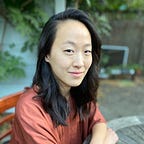Career Transition to UX Design: Tips for Portfolios
Job Search Part 2
What I learned as someone building a portfolio and now reviewing them when I interview designers for my company is, what you decide to keep or omit in your portfolio will show hiring managers your ability to surface relevant information, communicate clearly, and your collaborative style as a team member.
I went through 6 different drafts of my portfolio before getting my first job offer. In that time I asked for feedback from 4 designers and 2 hiring mangers and 1 recruiter, who gave me valuable perspectives. It was a lot of asking for help, hard work, and a great learning experience overall.
Your portfolio is a platform for telling your story. The design of your portfolio is also another opportunity to showcase your design skills. My goal for this article is to point you towards key information and additions to your portfolio that will lend credibility to your design experiences.
This is part 2 in a 3 part series:
Part 2: Tips for Portfolios
Please Keep In Mind
What skills make a candidate appealing is subjective. What design experiences are relevant will…
